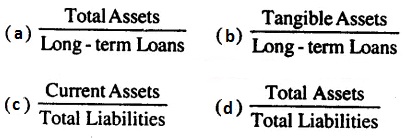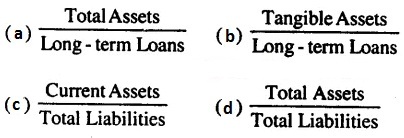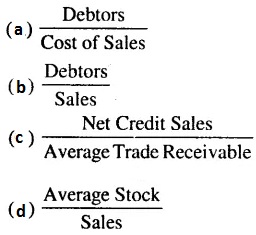CBSE Class 12 English – MCQ and Online Tests – Unit 6 – Poets and Pancakes
Every year CBSE conducts board exams for 12th standard. These exams are very competitive to all the students. So our website provides online tests for all the 12th subjects. These tests are also very effective and useful for those who preparing for competitive exams like NEET, JEE, CA etc. It can boost their preparation level and confidence level by attempting these chapter wise online tests.
These online tests are based on latest CBSE Class 12 syllabus. While attempting these our students can identify the weak lessons and continuously practice those lessons for attaining high marks. It also helps to revise the NCERT textbooks thoroughly.
CBSE Class 12 English – MCQ and Online Tests – Unit 6 – Poets and Pancakes
Question 1.
How many people were there in MRA group?
(a) 150
(b) 180
(c) 140
(d) 200 people from 20 nationalities
Answer
Answer: (d) 200 people from 20 nationalities
Question 2.
Why was Subbu considered number 2 at Gemini studio?
(a) because of his flattery
(b) because of his abilities
(c) because of creative skills
(d) none
Answer
Answer: (c) because of creative skills
Question 3.
Why was Subbu termed as ‘many sided genius’?
(a) his flattery
(b) gossip style
(c) interaction with others
(d) ability to create and manage things
Answer
Answer: (d) ability to create and manage things
Question 4.
The boy in the make up room was jealous of whom?
(a) actors
(b) author
(c) the visitor
(d) Subbu’s success and his closeness to the boss
Answer
Answer: (d) Subbu’s success and his closeness to the boss
Question 5.
Why was the author praying for crowd shooting at all times?
(a) to attract the crowd
(b) to avoid people
(c) to avoid epical narrations
(d) none
Answer
Answer: (c) to avoid epical narrations
Question 6.
Who was heading the make-up department?
(a) a Madrasi
(b) A tamilian
(c) A bengali
(d) A Bengali and later was succeeded by a Maharashtrian
Answer
Answer: (d) A Bengali and later was succeeded by a Maharashtrian
Question 7.
Why was Subbu a trouble shooter?
(a) because of his gossip style
(b) because of his flattery
(c) ability to mix up with everyone
(d) because of his problem resolving quality
Answer
Answer: (d) because of his problem resolving quality
Question 8.
Why did everybody in the studio think of giving some work to the author?
(a) because of the idle appearance of his work
(b) because he was an office boy
(c) because he was a helper
(d) none
Answer
Answer: (a) because of the idle appearance of his work
Question 9.
What is the example of National Integration in Poets and Pancakes?
(a) Make up department of Gemini
(b) rehersal room
(c) office of Gemini studio
(d) none
Answer
Answer: (a) Make up department of Gemini
Question 10.
What was MRA?
(a) British Army
(b) The Moral Rearmament Army- a counter movement to International Communism
(c) a wing of Indian Army
(d) A drama company
Answer
Answer: (b) The Moral Rearmament Army- a counter movement to International Communism
Question 11.
Who was the Englishman?
(a) Salman Rushdie
(b) D.H Lawrence
(c) George Orwell
(d) Stephen Spender- Editor of a British Periodical The Encounter
Answer
Answer: (d) Stephen Spender- Editor of a British Periodical The Encounter
Question 12.
When did MRA visit Madras?
(a) 1942
(b) 1922
(c) 1932
(d) 1952
Answer
Answer: (d) 1952
Question 13.
For whom was Gemini studio making films?
(a) for English people
(b) for illiterate
(c) for elderly peole
(d) for simple Tamilians who have no interest in English poetry
Answer
Answer: (d) for simple Tamilians who have no interest in English poetry
Question 14.
Who imitated the scenes of Sunset and Sunrise of Jotham Valley?
(a) Police
(b) Scouts of Madras
(c) Social Workers
(d) All Tamil Plays
Answer
Answer: (d) All Tamil Plays
Question 15.
Who was the founder of Gemini studio?
(a) Mr. S.S Vasan
(b) English man
(c) a Tamil boy
(d) a director
Answer
Answer: (a) Mr. S.S Vasan
Question 16.
Who was Greta Garbo?
(a) A Swedish actress- an Oscar winner
(b) a german actress
(c) a French actress
(d) a bengali actress
Answer
Answer: (a) A Swedish actress- an Oscar winner
Question 17.
How was Kothamanglam Subbu treated in the Gemini studio?
(a) with hatred
(b) rudely
(c) disrespectfully
(d) with high respect
Answer
Answer: (d) with high respect
Question 18.
Who is the author of Poets and Pancakes?
(a) Asokamitran (1931), a Tamil writer
(b) Charu Nivedita
(c) Jayakanthan
(d) Balakumaran
Answer
Answer: (a) Asokamitran (1931), a Tamil writer
Question 19.
In this lesson, what is the purpose of humor and satire used by the author?
(a) to highlight human abilities
(b) to show capabilities
(c) to show varied capacities
(d) to show and highlight human infancies and flaws
Answer
Answer: (d) to show and highlight human infancies and flaws
Question 20.
What has Asokamitran brought up through this write up?
(a) topics of film industry
(b) topics of make up industry
(c) topics of gossip
(d) topics of heroines
Answer
Answer: (a) topics of film industry
Question 21.
What does the expression ‘made to look ugly’ refer to ?
(a) make up done to look presentable before camera
(b) faces made by actors
(c) faces nade by office boy
(d) arrangements in the make up room
Answer
Answer: (a) make up done to look presentable before camera
Question 22.
How does the author come to know that English author was Stephen Spender?
(a) From a painting
(b) From the newspaper
(c) from a television show
(d) from a book- The God that failed
Answer
Answer: (d) from a book- The God that failed
Question 23.
What does the expression ‘ fiery misery’ mean?
(a) the glow of lights
(b) the bright lights
(c) the bright colorful dresses of heroines
(d) discomfort to the actors in the makeup room
Answer
Answer: (d) discomfort to the actors in the makeup room
Question 24.
When was Gemini studio set up?
(a) 1920
(b) 1930
(c) 1910
(d) 1940
Answer
Answer: (d) 1940
Question 25.
What things attracted the audience in the plays staged by MRA?
(a) their jewellery
(b) their make up
(c) their dialogues
(d) their sets and costumes
Answer
Answer: (d) their sets and costumes

















